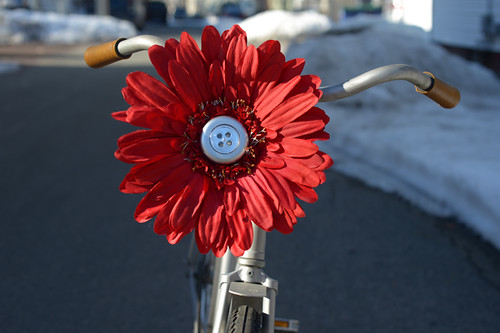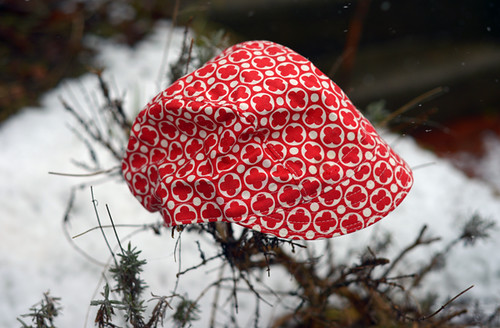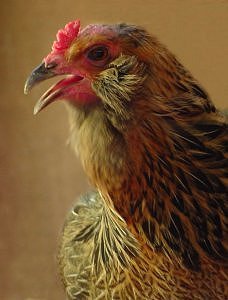Finally, our schedules and weather cooperated to let Steve and I climb together. Since it was early October, and the snow level was around 5000' most of the week, we decided alpine options would be a little cold and snowy (for rock climbing.) We made the decision Thursday night to make an attempt at Dreamer (5.9) on Green Giant Buttress.
Temps were hovering around freezing as we made the drive out to
Darrington Saturday morning. The drive in is pretty straight forward. Although with a standard sedan, you may wish to stop earlier than Steve and I. (We bottomed the car on rocks a few times.) A high clearance 4
WD could get even further than we did. Our driving progress stopped at a slight pullout on the left of the road just before a ditch.
We started hiking the road and after a 1/4 mile came to the point all vehicles would have to stop. Brush got thicker, but it was never that much of a bushwhack. Beta for the approach was accurate, and after some point in time we were near old mining debris and crossing the "braided stream." This is where is got slightly tricky. We approached the base of the "three tiered waterfall" as described in the approach. There was a very faint trail through serious vegetation right at the base of the falls. It did not look easily passable. So Steve and I hiked up a slippery slab at the first tier of the waterfall and found a more suitable looking path. We did a not so fun bushwhack up this path for about 10 minutes until it became a dead end. We hiked back down and found the correct bushwhack start from the falls. Which was at the base of the slab we climbed. It is currently marked by a log going up from the water into the bushes.
Once we found the correct drainage, things started going more smoothly. A bit of bushwhacking and we were back to homo
erectus. Now on semi-wet slabs scrambling up the drainage. Near the top of the drainage we had a choice, go right up something that looked like the side of a moraine (Rock loosely embedded in dirt.) or go up a "path" to the left. We wrongly chose path. If we had looked at the beta, we would have correctly gone right and taken less time and danger to reach the base of the route, but instead this is what followed:

Photo by Steve Machuga.
We scrambled 3rd and 4
th class slabs for a bit. (And possibly some 5
th class moves.) We even got out the rope at one point. Then the rock eased a bit, and we were finally near the base, where another party had left a pack. We geared up and from what I can tell, scrambled some 4
th or 5
th class up to the base. (Actually we got the rope out again for the final bit to the base.) At this point it was close to five hours since we left the car.
I led out on the first pitch, and according to Nelson's
topo, combined it with the second pitch. From where we started, we were just shy of a full rope length, so there was about 15' of
simul-climbing that Steve and I had to do to reach the anchor. Because I am blind, I totally missed the three bolt anchor and slung a bush and brought Steve up.
Steve started out on the next pitch, which looked too run-out for my taste. (Once again, we couldn't see bolts correctly and this pitch was somewhat off-route.) This pitch is supposed to go right and then up, but the bolts we could see were directly up and then far right. It wasn't until it was too late to turn around that we saw the bolt directly right of the belay, and the line of bolts leading up below the bolt we "aimed" for. Steve felt "our" variation was in the 5.10a land. This wouldn't surprise me, as the first bolt he clipped was on the Urban Bypass, which I believe goes at 10a. He made a scary run-out traverse over dirty rock to reach the next bolt. (No pics, as I was watching him closely.) I followed up behind, taking what may have been a slightly easier path.
We got to the next pitch where I led off on somewhat run-out knobby slab. The climbing was enjoyable and got the heart beating a bit. Steve led up the next pitch which had some awkward moves up what was called a 5.7 corner. The pitch was fun and ending in the most comfortable belay stance since the top of the first pitch. Steve led out on the next pitch which is the one Dreamer is known for. It starts in a shallow corner with easier climbing. It then goes to the top of a pillar, where a bolt is clipped. Then traverses right with no protection up to the bottom of a large flake. Then a 5.9 traverse back left and over the flake to enter "The Blue Crack." An awkward, 5.9 flake/crack that brings you up to the next hanging belay. Steve led it in fine style. I got cold at the belay as the sun went behind the ridge. I was getting tired and I think the cold I was getting all week finally was getting the upper hand. I followed behind, but felt really tired. (I also hadn't eaten a lunch yet.) I took a fall midway through the 5.9 traverse. Regained my composure, but had to struggle the rest of the way up the pitch. At the top, I asked Steve what time it was, and he said 4:30pm. I told him we had two hours of daylight, and it was in our best interest to descend.
This turned out to be a wise decision, as we had minor difficulties rapping with daylight. (One rap left Steve 15' shy of the anchor, and I had to lower him.) I had to make an intermediate stop to make sure I would reach the next anchor. On the last two raps, the other party reached us, and we shared their ropes for the final raps. I was a little slow packing up, and we lost them going into the bushwhack. We turned on our headlamps and headed downhill. Steve and I then proceeded to march around (
through?) vine maples for what seemed an
eternity before we regained the gully where we should have left it in the morning. The rest of the scramble/
swhack/hike out was uneventful, but all by headlamp.
Overall, the climbing on Dreamer is a step up from what I am used to doing. I think my difficulties with the 5.9 pitch were more due to fatigue than my climbing ability, but I will most likely have to wait until next year to tackle that climb again.
Pics are located here.
(I included Steve's pics as well.)

 Photo by Steve Machuga.
Photo by Steve Machuga.
 So I'm reading the "Find other climbers" forum on http://www.qurank.com/
So I'm reading the "Find other climbers" forum on http://www.qurank.com/ 



 The scene we awoke to on Tuesday morning.
The scene we awoke to on Tuesday morning. It was pretty, but we really could have done without it! I guess Mother Nature just wanted us to be able to experience all facets of the Grand Canyon.
It was pretty, but we really could have done without it! I guess Mother Nature just wanted us to be able to experience all facets of the Grand Canyon. Fog! Filling the Canyon! Yes, snow, we had expected. But fog? One amongst our party, who shall remain nameless (not me), wasn't sure that we should continue. It would be too slippery. We couldn't see. But the other two of us took the positive attitude (or perhaps, were a little crazy) “It will get better. The fog will go away. The snow won't be very far down.” On we went. This picture was taken at 8:42 a.m. just beyond the first turn into the canyon.
Fog! Filling the Canyon! Yes, snow, we had expected. But fog? One amongst our party, who shall remain nameless (not me), wasn't sure that we should continue. It would be too slippery. We couldn't see. But the other two of us took the positive attitude (or perhaps, were a little crazy) “It will get better. The fog will go away. The snow won't be very far down.” On we went. This picture was taken at 8:42 a.m. just beyond the first turn into the canyon. Sue and Fred at the first tunnel, just .18 miles from the rim and ten minutes into the hike. The tunnel is visible in the previous photo. It was slow going. It was slippery. We took our time. Others had gone down that path before us, so it had to be okay, right?
Sue and Fred at the first tunnel, just .18 miles from the rim and ten minutes into the hike. The tunnel is visible in the previous photo. It was slow going. It was slippery. We took our time. Others had gone down that path before us, so it had to be okay, right? The view of the rim from the trail, 20 minutes into the hike.
The view of the rim from the trail, 20 minutes into the hike. One of the worst patches of the trail, about 30 minutes into the hike. Beneath that fresh layer of snow was a very thick layer of slippery ice. This section of the trail gets little, if any, sun.
One of the worst patches of the trail, about 30 minutes into the hike. Beneath that fresh layer of snow was a very thick layer of slippery ice. This section of the trail gets little, if any, sun.









 Many of the shops in Old Town were first residents, some over 200 years old. There are still people that live over their shops or behind them.
Many of the shops in Old Town were first residents, some over 200 years old. There are still people that live over their shops or behind them.